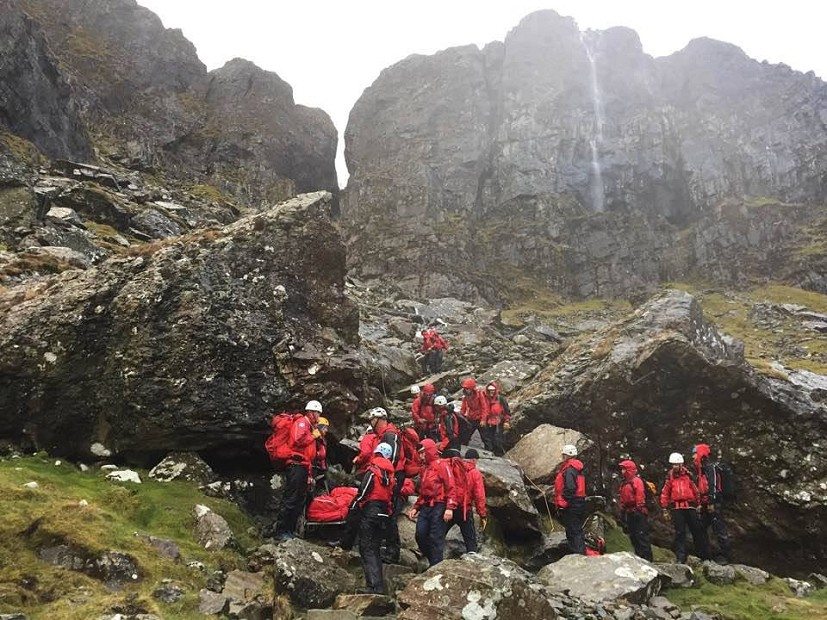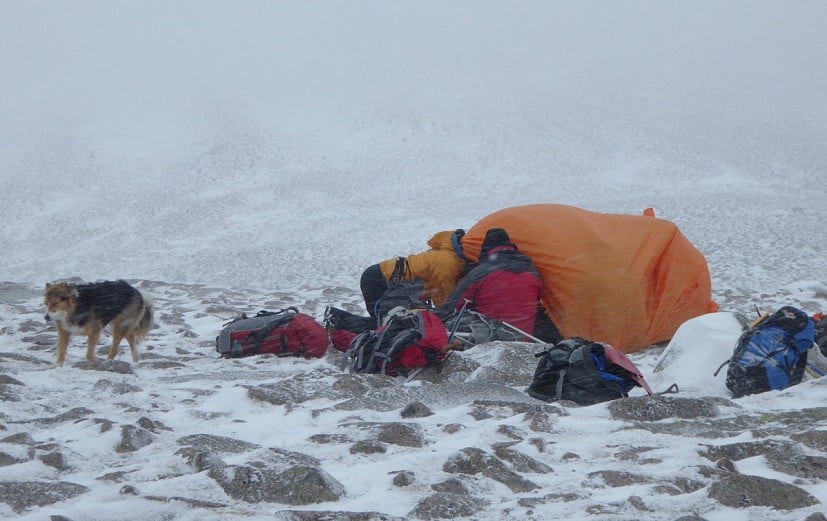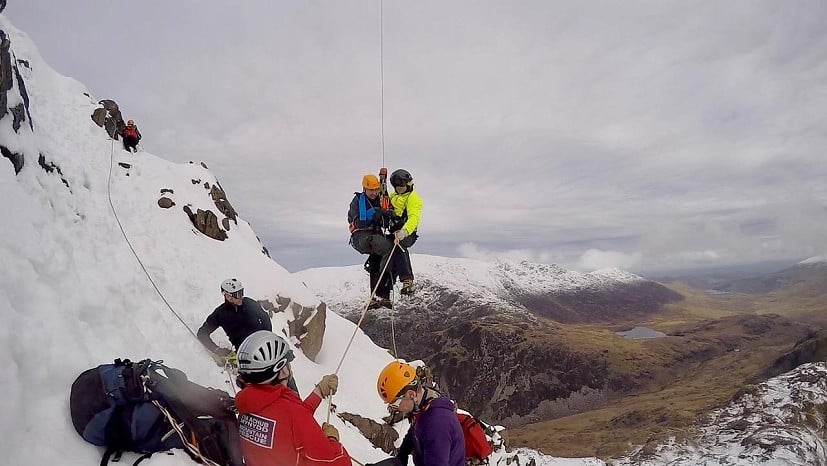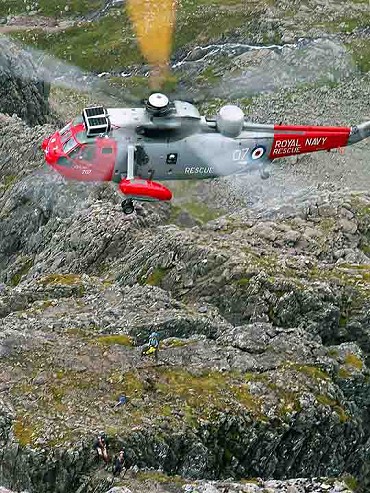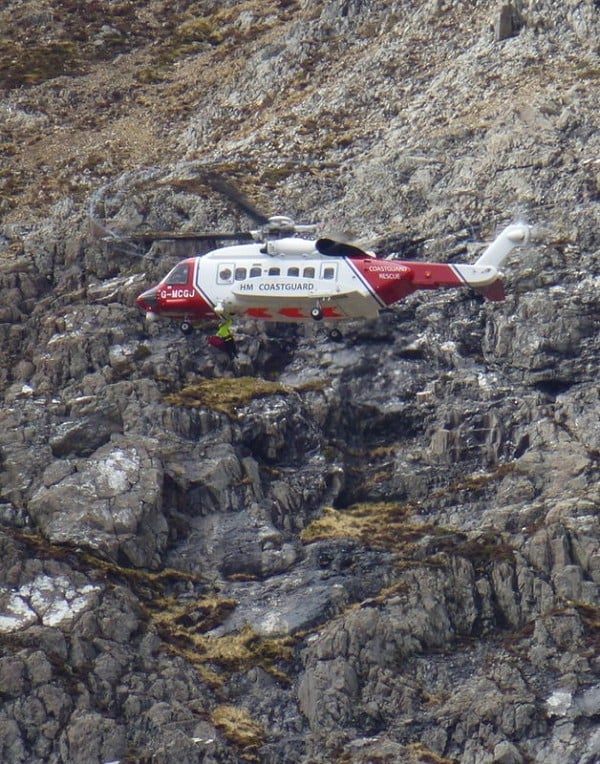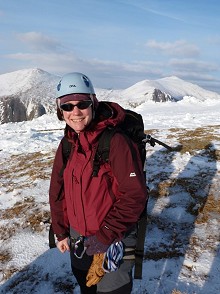Calling in a Mountain Rescue
Phoning for help in the mountains - we all hope we'll never need to, but if the worst happened would you know what to do? Helen Howe, mountain first aid expert and Llanberis Mountain Rescue Team member, talks us through the process.
Every year well over 1000 rescues and searches take place in the British Mountains, and these are generally initiated by members of the public - you and me. So would you know what to do in an Emergency? Who to contact? What information would be useful? What if you do not appear to have a mobile phone signal? And what's the course of action to take once you know a large rescue helicopter is on its way?
So you have just seen someone go over badly on their ankle. What do you do? Well apart from the First Aid side which we will be looking at in another article, and keeping them warm and sheltered, it quickly becomes apparent that they will not be capable of walking off under their own steam. Now despite what we are taught in Mountain Leader training about improvised carries, it is nigh on impossible to carry an adult a long way down a mountain side (why else would a mountain rescue stretcher carry need a minimum of 8 people on the stretcher?) so you'll need to contact the Emergency Services.
Which number should you use?
There have been a lot of urban myths doing the rounds on Social Media over the past few years about 112 being an extra special number. Don't believe it! 999 and 112 do the same thing. Both can do Emergency text calls so long as they have been registered beforehand. Both can be used for 'pinging' the phone and giving a location if necessary, both can do Emergency Calls Only (and neither can have the calls returned in this situation). If you read the Mountain Safety site you will see there is no difference.
Personally I stick to 999 as it is an easy number to remember for everyone. (N.B. If you are abroad then 112 is the Emergency number for Europe but several regions also have their own emergency number e.g. different regions in the Pyrenees or Alps which are local and so have more knowledge of the area they are dealing with.)
- It's worth everyone registering their mobile with the emergency SMS system, which enables you to send a text message to 999 - useful in the event that reception is too poor for a voice message to get through, for instance, or if it's so windy that you will struggle to make yourself understood in a phone call. For details, see emergencysms.org.uk
Who you gonna call?
Mountain Rescue is the accepted Emergency Service for the mountains. If you are unsure whether an ambulance would be appropriate because you feel close to the road, then ask yourself whether two paramedics in normal shoes with shiny soles could wheel their stretcher back to the road from where you are! For example the Llanberis Mountian Rescue Team, of which I am a member, has been delayed on a few rescues because the Ambulance Service was asked for first and on arrival they realised that they could not evacuate the casualty even from only 200m up the Pyg Track and then had to call the Mountain Rescue team in.
So when you dial 999, ask for the Police and then Mountain Rescue.
What do they need to know?
A good place to start is with the acronym ATMIST:
|
A |
Age and other casualty details |
e.g. 20 year old male |
|
T |
Time of accident |
13:30 |
|
M |
Mechanism |
Fell 20m from a scramble |
|
I |
Injuries (Illness) sustained |
Head injuries |
|
S |
Signs |
Confused, aggressive, bleeding scalp |
|
T |
Treatment & Trends |
Have stopped bleed with bandage. Starting to go drowsy |
Other useful information includes:
- Your name and basic details.
- The name, age and gender of the casualty/casualties if possible (it may be someone you have come across on the mountains so you may not actually have all this information),
- Any injuries
- Location including grid reference and description of location
- Any possible hazards e.g. you are all on a scree slope or perched on the edge of a drop
- Number in the party and intentions e.g. are you intending to split the party and get some of the non-injured ones off the hill
- Emergency equipment and any treatment you have offered
- Colour of group shelter/clothing to make your group stand out (I have watched a rescue helicopter in the Brecon Beacons fly over each stationary group in turn obviously looking to see if there was a casualty in the group as they hadn't been given certain information)
- Weather including wind strength and cloud base. Are you in the cloud?
- Any other mobile phone numbers in the group in case yours fails or is dropped.
Often you will be asked other questions by the call operator including about your equipment and food and drink, or the battery life on phone.
After speaking to the call operator, the phone call will be terminated and then if you have a signal expect a phone call from a team member who may well ask you the same questions as well as others.
If possible SAMPLE is also useful to pass on to the team when they get back to you:
|
S |
Signs and symptoms |
|
A |
Allergies |
|
M |
Medication |
|
P |
Past history of this medical problem or others |
|
L |
Last time ate or drank |
|
E |
Events |
Most UK teams now use the SARLOC system, and whether they manage to speak to you or not they will send you a text and ask you to click on the internet link if you have a Smart Phone. This allows the link to interrogate your phone's GPS and it then shows your location to the team in digital mapping. This has saved a lot of time in rescues.
The Long Wait...
Some people may be under the impression that Mountain Rescue team members are fully employed by the service and therefore are sitting waiting like a coiled spring for a call. However it is a voluntary organisation and most people are in employment and have a life outside the Mountain Rescue. As a result the response time can appear incredibly slow to people used to the target times set in urban areas. In some teams the first call goes to the leaders or co-ordinators who then decide whether the team is needed. They will phone the informant to investigate the incident before deciding to call the team (unless it is obvious from the initial information that it is a life and death situation.) The team members then may have to leave work or whatever they are doing to head across to their team base (10 – 20 minutes) to pick up the equipment and be deployed (10 – 20 minutes). From there, depending on access to a helicopter, and seriousness of injury, in a team like Llanberis they will then drive as close as they can (20 minutes), before the team then continue on foot (1 hour or more).
The above timings are not set in stone as it depends how many team members arrive and how quickly as well as the urgency of the callout etc., but it gives you some idea of the response time. So even for a team like Llanberis where around 20 team members live within 10 minutes of the rescue base, the response time to the casualty site may be 2 hours or more. For some teams it may well be longer as they cover a larger area and team members have to drive further to their base and the mountain.
So make sure you and the casualty are wrapped up warm and dry!
How to Attract Attention
In the event that you have no phone signal at all or that the visibility is extremely poor and so the rescue team who are trying to locate you in the mist are struggling, a whistle is a must.
The accepted international Distress Signal is 6 blasts on the whistle, and then the response from someone who hears it is 3 blasts on the whistle. However very few people actually know the IDS and usually any blasts on the whistle tend to be phoned in to Mountain Rescue, so don't worry if you can't actually remember the exact numbers. Again at night torches can be used to attract attention. The proper method is again 6 flashes but some people remember morse code better than the IDS (and again often rescue teams are phoned by someone who has seen torch lights on a mountain side or ridge when in fact the people using them are perfectly fine and enjoying a night walk).
Helicopters
The red and white Coastguard Helicopter is now becoming as familiar a site across the skies of the UK mountains as the yellow RAF Sea King was.
Where there are a lot of people don't wave at the helicopter for attention as loads of people wave at them! Raise both your arms and hold them up to create a Y with your body (this represents a YES, as in yes I need help).
The Sikorski S92 is a much larger machine than the old Sea King, with a stronger downdraft (around 60 mph) which is phenomenal. If you have been informed by the rescue team that the helicopter is coming in for you, then you really will need to batton down the hatches. The downdraft is strong enough to send rucksacks and humans flying. It is worth tying rucksacks together and get someone to sit on them otherwise you might find yourself in the position of a mountain leader recently who was helping out with a woman who had fallen 30 m down Crib y Ddysgl on Snowdon (see news link here).
If you are on a steep slope the chances are that the helicopter will do a very long winch down to you to try to prevent as much downdraft. If you see anything dangle from the aircraft do NOT try to grab it. The first cable down is a discharger for static build up. Allow the winchman to sort himself out. They are well used to it!
If your casualty is in a group shelter you will need to remove it before the helicopter is close as this could fly up into the exhaust as can other loose objects such as hats. Remove hats or make sure your hoods are fully fastened. You may need to be careful of grass and grit being blown into your eyes.
Make sure you if you are in a group and the casualty has the car keys that someone who is staying on the mountain has got now got those.
At night do NOT shine your torch directly at the aircraft to get attention. They are using night vision and your torch can cause intense light which blinds the pilots' vision temporarily.
After the rescue
Most teams will accompany you down the mountain if your casualty was part of your group (and especially if they were flown off to hospital). They may well take you back to their base to warm you up and offer you a hot drink and comfort before giving you the directions to the hospital, if needed.
About Helen Howe
Helen runs Snowdonia First Aid with her husband Steve.
Each have over twenty years of Scottish winters and are qualified Winter and International Mountain Leaders. They run Outdoor First Aid courses and Mountain Leader Training and Assessments as well as mountain and hill skills courses. This winter Helen and Steve are running Winter Skills courses both in Snowdonia and Scotland.
Helen is also a qualified Mountain Rescue Dog handler who has trained three SARDA dogs. Both she and Steve are active members of Llanberis Mountain Rescue Team and have served on the Medical and Training Sub committees running some of the team's winter training.

